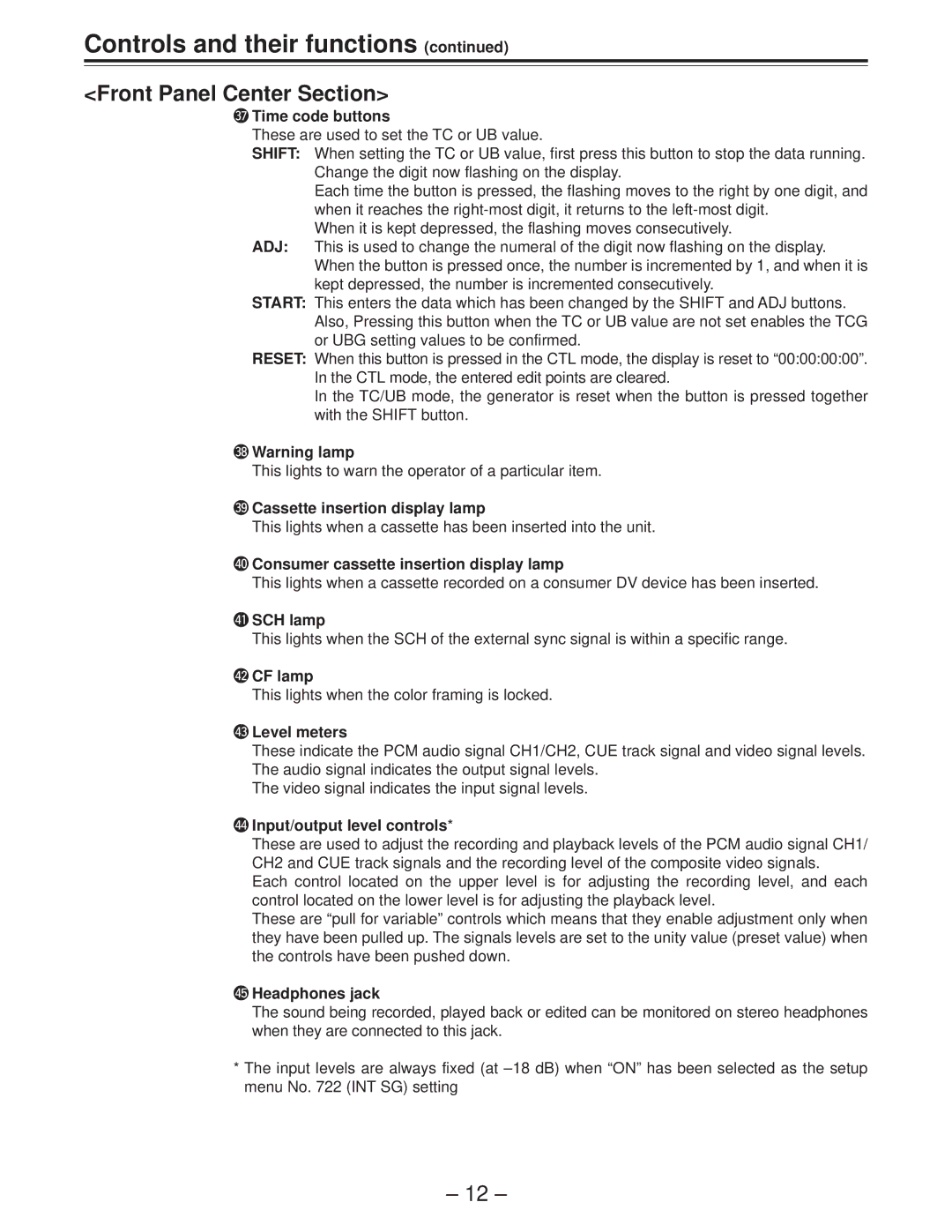Controls and their functions (continued)
<Front Panel Center Section>
#7Time code buttons
These are used to set the TC or UB value.
SHIFT: When setting the TC or UB value, first press this button to stop the data running. Change the digit now flashing on the display.
Each time the button is pressed, the flashing moves to the right by one digit, and when it reaches the
When it is kept depressed, the flashing moves consecutively.
ADJ: This is used to change the numeral of the digit now flashing on the display. When the button is pressed once, the number is incremented by 1, and when it is kept depressed, the number is incremented consecutively.
START: This enters the data which has been changed by the SHIFT and ADJ buttons. Also, Pressing this button when the TC or UB value are not set enables the TCG or UBG setting values to be confirmed.
RESET: When this button is pressed in the CTL mode, the display is reset to “00:00:00:00”. In the CTL mode, the entered edit points are cleared.
In the TC/UB mode, the generator is reset when the button is pressed together with the SHIFT button.
#8Warning lamp
This lights to warn the operator of a particular item.
#9Cassette insertion display lamp
This lights when a cassette has been inserted into the unit.
$0Consumer cassette insertion display lamp
This lights when a cassette recorded on a consumer DV device has been inserted.
$1SCH lamp
This lights when the SCH of the external sync signal is within a specific range.
$2CF lamp
This lights when the color framing is locked.
$3Level meters
These indicate the PCM audio signal CH1/CH2, CUE track signal and video signal levels. The audio signal indicates the output signal levels.
The video signal indicates the input signal levels.
$4Input/output level controls*
These are used to adjust the recording and playback levels of the PCM audio signal CH1/ CH2 and CUE track signals and the recording level of the composite video signals.
Each control located on the upper level is for adjusting the recording level, and each control located on the lower level is for adjusting the playback level.
These are “pull for variable” controls which means that they enable adjustment only when they have been pulled up. The signals levels are set to the unity value (preset value) when the controls have been pushed down.
$5Headphones jack
The sound being recorded, played back or edited can be monitored on stereo headphones when they are connected to this jack.
*The input levels are always fixed (at
– 12 –
